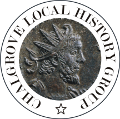The Mill, Chalgrove
Chalgrove Mill was last used to produce flour on National Mills Day, 2002. Its ultimate use commercially was in the production of grist, in the 1950s, by which time it was electrically powered.
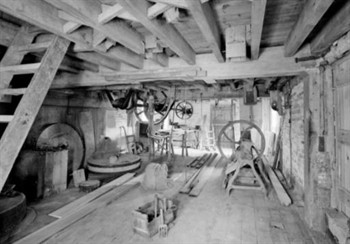 The animal food was sold mainly to local smallholders and cottagers to feed their pigs and chickens, but as these enterprises diminished the mill gradually fell into disuse, and so it remained, largely untouched and intact for around fifty years.
The animal food was sold mainly to local smallholders and cottagers to feed their pigs and chickens, but as these enterprises diminished the mill gradually fell into disuse, and so it remained, largely untouched and intact for around fifty years. 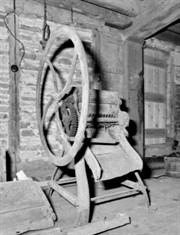 A new owner, in October 1996, renovated the attached house and restored the mill to working order before selling the property in 1999.
A new owner, in October 1996, renovated the attached house and restored the mill to working order before selling the property in 1999.
The building that houses the mill was re-built in 1871, when the under or mid shot wheel was replaced by an overshot one. During the restoration works of the late 1990s, the wheel was turned to run backwards as a high breast shot, thus not needing the high water level that had in the past caused flooding in the village.
Millers of the more recent past had the full water rights. Traditionally, at lunch time on Saturday, the miller's assistant would open the top gate, on the Berrick road near the junction with Monument Road, to allow the water to run down the front brook, through the High Street, so that villagers could do their washing and, after Chapel on Sunday, the miller would close the gate so that the water flowed through the Marl Brook, or Back Brook as it was locally known, to fill the lagoons that had been constructed so that sufficient water would be available for a full six and a half days' milling.
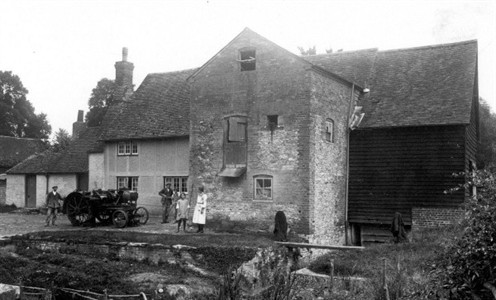 When, in the 1920s, a long drought reduced the Marl Brook, now designated Chalgrove Brook, to a trickle, a steam engine was used to keep the mill working, and when this had to be returned for its normal usage a tractor, lent by the same farmer, was used in conjunction with a portable engine.
When, in the 1920s, a long drought reduced the Marl Brook, now designated Chalgrove Brook, to a trickle, a steam engine was used to keep the mill working, and when this had to be returned for its normal usage a tractor, lent by the same farmer, was used in conjunction with a portable engine.
Evidence of both Romano-British and Saxon mills has been found in Chalgrove, and the Domesday Book records five mills. One of these was probably at Benson: two records testify the grant of a mill at Benson from the Lord of the Manor of Chalgrove to the Abbot of Abingdon, and the Hundred Rolls of 1275 refers to four mills only. Records of the later medieval period refer by name to three mills. Stratfordmill was at the eastern end of the parish, Chyrchemylle was probably not far from the church and the Barentin manor, and Trylle Mill may have been on or near the site of the present mill. In 1548 Peter Gylmyn, had the tenancy from Magdalen College of two mills, one a water mill and the other a horse mill.
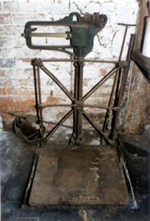 Richard Smith is recorded as miller in 1863 and again in 1868. In the 1881 census John Bowerman is recorded as master miller and his thirteen-year-old son, Edward, as miller. There was also a miller, George Plank, living at Sun Mill Cottages. Joseph Saw was recorded, in 1899, as carpenter, builder, beer retailer and miller (water). It is understood that the Nixey family moved from the windmill at Brill to The Mill at Chalgrove in c.1900 and Frederick Nixey took over the milling and associated business in 1909. An agreement of tenancy to Frederick Nixey is dated 1 June 1920, and it was he who purchased The Mill when it was sold by Magdalen College in 1942. When Frederick Nixey died in 1948, his son-in-law, Frank Lawrence took over the by then much diversified business.
Richard Smith is recorded as miller in 1863 and again in 1868. In the 1881 census John Bowerman is recorded as master miller and his thirteen-year-old son, Edward, as miller. There was also a miller, George Plank, living at Sun Mill Cottages. Joseph Saw was recorded, in 1899, as carpenter, builder, beer retailer and miller (water). It is understood that the Nixey family moved from the windmill at Brill to The Mill at Chalgrove in c.1900 and Frederick Nixey took over the milling and associated business in 1909. An agreement of tenancy to Frederick Nixey is dated 1 June 1920, and it was he who purchased The Mill when it was sold by Magdalen College in 1942. When Frederick Nixey died in 1948, his son-in-law, Frank Lawrence took over the by then much diversified business.
January 2013.
